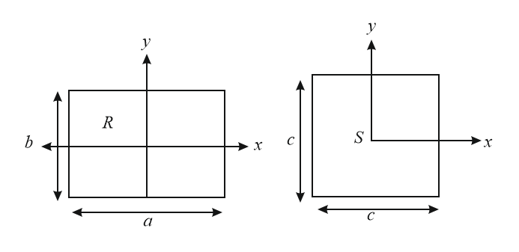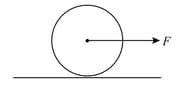NCERT Solutions for Chapter: Systems of Particles and Rotational Motion, Exercise 5: LA
NCERT Physics Solutions for Exercise - NCERT Solutions for Chapter: Systems of Particles and Rotational Motion, Exercise 5: LA
Attempt the practice questions on Chapter 7: Systems of Particles and Rotational Motion, Exercise 5: LA with hints and solutions to strengthen your understanding. NCERT Exemplar Physics - Class 11 solutions are prepared by Experienced Embibe Experts.
Questions from NCERT Solutions for Chapter: Systems of Particles and Rotational Motion, Exercise 5: LA with Hints & Solutions
Find the centre of mass of a uniform half-disc, quarter-disc.
A disc of radius is rotating with an angular speed about a horizontal axis. It is placed on a horizontal table. The coefficient of kinetic friction is .
What condition should be satisfied for rolling to begin?
A disc of radius is rotating with an angular speed about a horizontal axis. It is placed on a horizontal table. The coefficient of kinetic friction is .
Calculate the time taken for the rolling to begin.
Two cylindrical hollow drums of radii and , and of a common height , are rotating with angular velocities (anti-clockwise) and (clockwise), respectively. Their axes, fixed are parallel and in a horizontal plane separated by . They are now brought in contact
Show the frictional forces just after contact.
Two cylindrical hollow drums of radii and , and of a common height , are rotating with angular velocities (anti-clockwise) and (clockwise), respectively. Their axes, fixed are parallel and in a horizontal plane separated by . They are now brought in contact .
Identify forces and torques external to the system just after contact.
Two cylindrical hollow drums of radii and , and of a common height , are rotating with angular velocities (anti-clockwise) and (clockwise), respectively. Their axes, fixed are parallel and in a horizontal plane separated by . They are now brought in contact .
What would be the ratio of final angular velocities when friction ceases?
A uniform square plate (side ) and a uniform rectangular plate (sides ) have identical areas and masses (Figure).

Show that
A uniform disc of radius , is resting on a table on its rim. The coefficient of friction between disc and table is (Figure).

Now the disc is pulled with a force as shown in the figure. What is the maximum value of for which the dise rolls without slipping?
